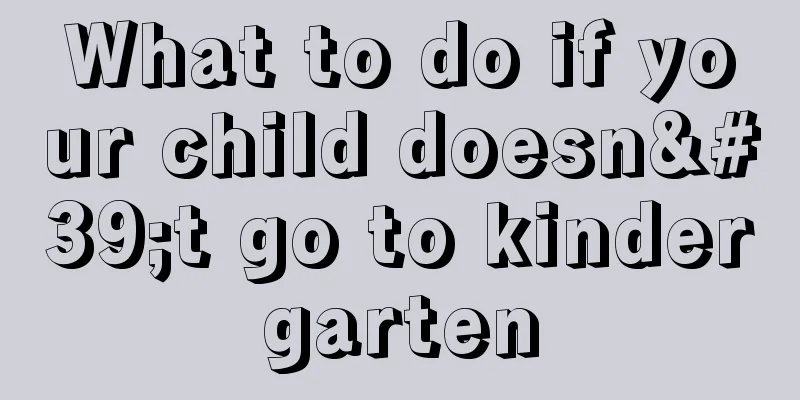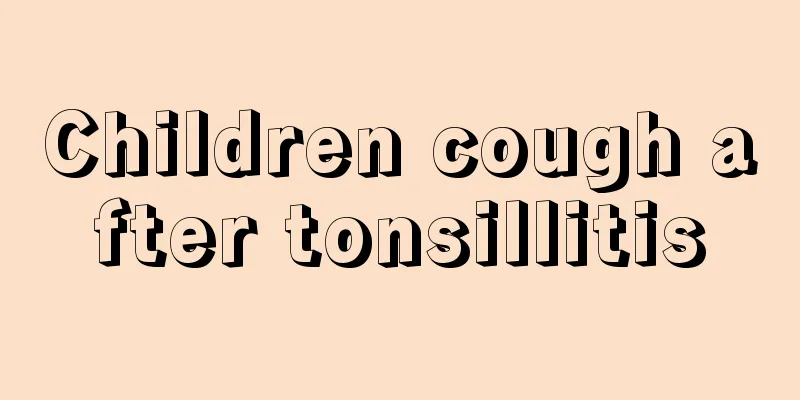How often should you change your baby's pacifier?

|
In fact, many people are taking care of children for the first time. There are still many things they are not familiar with in daily life, and there are many things they need to pay attention to. Otherwise, it is very likely that bacteria will enter their children's bodies and cause diseases. Especially for baby pacifiers, we should pay more attention to the usage time. Let us learn together how often it is best to change baby pacifiers. Pacifier life Generally, pacifiers are replaced after 2-3 months of use. Pacifiers are generally made of latex, silicone, rubber, etc., and may be damaged due to disinfection and other reasons. Look at the size of the nipple This is easy to judge. If your baby sucks quickly and for more than 15 minutes, the nipple is too small. At this time, the mother can help the baby change the nipple, or make it bigger. If your baby starts to play with the nipple soon after feeding, it means the nipple is too empty or the baby is not hungry. Of course, if the baby chokes on milk, it means that the mouth of the pacifier is too large. At this time, you need to change to a smaller pacifier. Check if the nipple is damaged When mothers are feeding their babies, they should check the pacifier for damage every time. If it is damaged, they should replace it immediately. A damaged pacifier is harmful to the baby, mothers should pay attention. Latex pacifiers are made of natural rubber, fit the nipple very closely, are soft, and babies prefer them. Their service life is 3-4 weeks. Silicone pacifiers do not have the peculiar smell of rubber, are easily accepted by babies, are not easy to age, and are heat-resistant and corrosion-resistant. Its service life is about 2 months. If the pacifier is damaged, corroded or other special circumstances occur, please replace the pacifier in time to ensure the baby's dietary safety. Mothers also need to check their baby's pacifier regularly. If it is damaged or cracked or has the following conditions, it must be replaced: 1. The pacifier has been damaged by the baby. 2. If the baby has a lot of effort to feed and takes more than fifteen minutes to feed, then the nipple is too small or is blocked. At this time, the mother can help the baby change the nipple or make the nipple hole bigger. 3. The nipple becomes thinner, which means that the nipple is beginning to become loose. The way to check the strength of the pacifier is to pull the nipple hard. A good pacifier should bounce back to its original shape. If it doesn't bounce back, it should not be used. 4. The pacifier becomes sticky or swollen, which may also be caused by aging of the pacifier. 5. The pacifier is cracked or damaged. If the pieces fall off, it may cause suffocation to the baby. 6. The pacifier changes color, which may indicate that the pacifier is aging. The above article gives you a detailed introduction on how often it is best to change the baby's pacifier. I believe you already have a preliminary understanding. The pacifier goes directly into the baby's mouth, so it must be kept clean and hygienic to ensure health. |
<<: Reasons for tears in one eye of a baby
>>: Reasons for weaning babies at the right months
Recommend
Do newborns need to take cod liver oil?
Cod liver oil is a common thing in people's d...
When caring for your baby’s private parts, pay attention to these details!
There are many things to pay attention to in the ...
How to make baby food puree
In addition to breastfeeding, babies also need to...
What is the reason for a newborn's pointed head?
In our lives, many babies' heads are not part...
What is the height and weight of a 24 month old baby?
Whether a child is developing well or not can be ...
Child care knowledge
Children are the hope of every family and the flo...
How effective is scraping for treating cough in children?
Children are prone to illness during their growth...
Causes and treatment of bruxism in children
There are many reasons for children to grind thei...
What is the pimple on the butt?
I believe many parents have heard of phimosis in ...
Why does a four-month-old baby suck his fingers?
At some point, some parents will find that their ...
How to eradicate baby's mouth corner eczema
Every baby is the apple of the parents' eyes....
Why do children's nails peel off?
The development of children affects and is relate...
Why do babies jump when they sleep?
The arrival of the baby has brought some changes ...
Three-year-old baby's tongue coating is white
We all know that the most important things in Chi...
What to do if baby has red bumps on face due to allergies
Allergies are generally allergies to certain subs...









